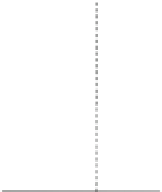Information Technology Reference
In-Depth Information
x
s
c
S
(
)
Q
4
h
S
Q
3
S
c
v
Q
2
s
v
S
0
y
1
Fig. 1.
A graphical presentation of demand and the fraction of good units
The retailer's objective is to choose an order quantity
Q
to maximize his expected
utility.
The following theorem characterizes the retailer's optimal ordering policy.
Theorem 1.
The retailer's expected utility function
E
[
U
(
π
(
Q,X,Y
))]
is con-
cave in Q. Thus there exists a unique optimal order quantity
Q
∗
that satisfies
the following first-order optimality condition:
v
)
1
0
yg
(
y
)
F
[
(
c−v
)
yQ
∗
s
(
λ
−
1)(
c
−
]
dy
−
v
c
+
h
)
1
0
yg
(
y
)
F
[(1 +
s
−
c
)
yQ
∗
]
dy
(5)
+(
λ
−
1)(
s
−
h
v
)
1
0
yg
(
y
)
F
(
yQ
∗
)
dy
=
λμ
(
s
+(
s
+
h
−
−
c
+
h
)
.
Proof.
Taking the first-order and second-order derivatives of
E
[
U
(
π
(
Q,X,Y
))]
with respect to
Q
,wehave
v
)
1
0
dE
[
U
(
π
(
Q,X,Y
))]
dQ
yg
(
y
)
F
[
(
c
−
v
)
yQ
=
−
(
λ
−
1)(
c
−
]
dy
s
−
v
c
+
h
)
1
0
yg
(
y
)
F
[(1 +
s
−
c
(6)
−
(
λ
−
1)(
s
−
)
yQ
]
dy
h
v
)
1
0
−
(
s
+
h
−
yg
(
y
)
F
(
yQ
)
dy
+
λμ
(
s
−
c
+
h
)
,
and
d
2
E
[
U
(
π
(
Q,X,Y
))]
dQ
2
1
v
)
2
(
λ
−
1)(
c
−
y
2
g
(
y
)
f
[
(
c
−
v
)
yQ
=
−
]
dy
s
−
v
s
−
v
0
1
(
λ−
1)(
s−c
+
h
)
2
h
y
2
g
(
y
)
f
[(1 +
s−c
h
−
)
yQ
]
dy
0
v
)
1
0
y
2
g
(
y
)
f
(
yQ
)
dy <
0
.
−
(
s
+
h
−
(7)


















Search WWH ::

Custom Search